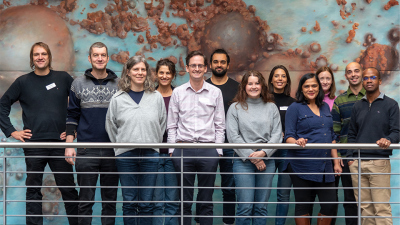Page path:
- Home
- Discover
- Archive News
- News 2023
- Gas Hydrates Workshop
Workshop on the modeling of gas hydrates
As part of the Ocean Floor Cluster of Excellence, an international group of 14 researchers met at MARUM for three days for a workshop to investigate the possible effects of the periodic gas hydrates states in nature in more detail by using the new modeling solutions.
Download the agenda of the "Gas Hydrate Modeling Workshop"
More information:
- Link to Ocean Floor - Cluster of Excellence
- Link to publication: Shubhangi Gupta, Ewa Burwicz-Galerne, Christopher Schmidt, Lars Rüpke "Periodic states and their implications in gas hydrate systems" Earth and Planetary Science Letters, Volume 624, 2023, 118445.



